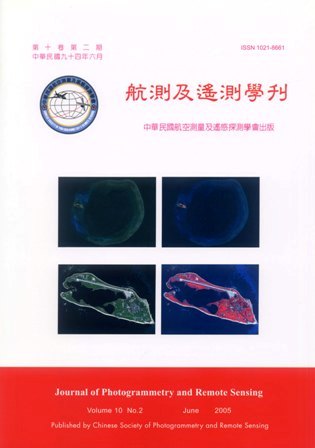A field spectroradiometer was used to measure the spectral reflectance of water body. The reflectance was calculated as the ratio of surface water radiance to the standard whiteboard radiance nearly measured at the same time. Water samples were taken simultaneously for determining their chlorophyll-a, suspended solid and transparency. The relationships between those water quality parameters and spectral reflectance were analyzed using stepwise multiple regression to derive optimal prediction models. The multiple regression was also applied to the SE-590 simulated SPOT bands. The SPOT image of the same day was also analyzed using the same method to compare the statistical results. It shows that the multiple regression models using the SE-590 reflectance data can get the best water quality prediction results. The evaluated RMS error of chlorophyll-a, suspended solid and transparency of water quality parameters are 0.57 ug/l, 0.2 mg/l and 0.17 m, respectively, and the RMS errors are 1.03 μg/l, 0.51 mg/l and 0.32 m for SPOT data, respectively. The SE-590 simulated SPOT three bands data obtained the worst results because the RMS errors are 1.77 ug/l, 0.49 mg/l and 0.37 m. Further, The band ratio of red/green and red/NIR were used to detect the chlorophyll-a relative distribution qualitatively, and assures that the ratio is less, the chlorophyll-a is abundant in TEKEE reservoir.
